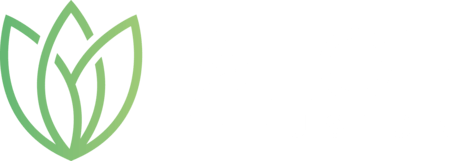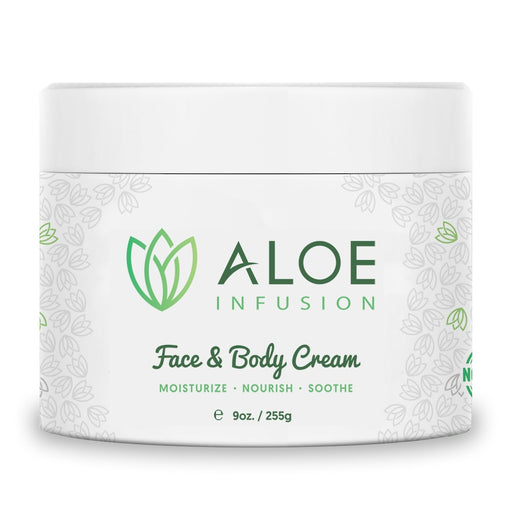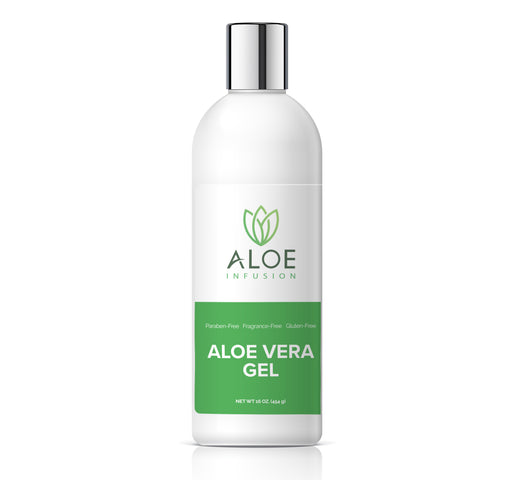Allantoin
Allantoin is a healing, moisturizing, soothing and anti-irritating, keratolytic and non-toxic agent useful in dermatological, cosmetic and veterinary preparation. Allantoin is a valuable cell-proliferating healing agent which stimulates healthy tissue formation. Allantoin has a pronounced keratolytic and skin softening action, acts as chemical divider of necrotic and scaling tissue, clearing up the areas where applied.
Allantoin is effective at quite low concentrations, 0.1% up to 2%. As natural component, Allantoin is found in wheat germ, rice polishings, confrey roots, in the earth-worm and as organic component of many soils.
Next Ingredient
Almond Oil
An emollient/moisturizer; a natural vegetable oil pressed from almonds used for penetrating and softening. Massage therapists have long used this moisturizing oil for massage. Is used to soften dry skin and to help relieve dry, itchy and irritated skin. Main component is olein with a small proportion of glyceride. Similar to Olive Oil. Elegant skin feel.
Next Ingredient
Carrageenan
Carrageenan is a natural material that comes from the red seaweed plant found in the Atlantic Ocean. When carrageenan is extracted from red seaweed by boiling it or treating it with hot alkali, it forms a gel-like material that gives it firmness and makes it an effective thickener.
Carrageenn has been proven beneficial to skin in several ways. In addition to its wonderful humectant properties for the skin and hair, it’s also been found in some studies to block the growth of viruses.
Next Ingredient
Cetyl and Stearyl Alcohol From Coconut
A fatty alcohol used as an emollient, emulsifier, thickener, and carrying agent for other ingredients. We use a naturally derived cetyl alcohol as in coconut fatty alcohol. It is not an irritant and is not related to SD alcohol or ethyl alcohol. The term alcohol here is a real disservice to this ingredient as it is really a fat substance.
Considered by some sources to be non-comedogenic, it is also a moisturizer.
Next Ingredient
Citric Acid
A weak organic tricarboxylic acid. It occurs naturally in citrus fruits. Often used to adjust the pH of a product.
Next Ingredient
Cocoa Butter
Cocoa butter is a healthy fat, mostly saturated just like coconut oil. It makes an excellent skin moisturizer, plus it does more than just hydrate the skin — it helps actually heal it from the inside out too.
In addition to its moisturizing properties, Cocoa butter contains compounds called cocoa mass polyphenols, which some studies have found can help diminish signs of aging, plus soothe sensitive skin suffering from dermatitis or rashes.
Next Ingredient
Crystallized Aqua
This water technology organizes the water molecules into highly structured crystalline forms that are able to penetrate fully into cells for total hydration. Most water is so disorganized from being treated with harsh chemicals, having been stored without movement, and being pushed through pipes that the molecules are far too large to penetrate into the cells of our bodies. Thus we take in water but do not actually rehydrate.
Water naturally moves in a spiral and this is what keeps it structured and organized and able to hold infinite amounts of information. Our technology structures the water. Powerful magnetic and infrared sources reduce the size of individual water clusters, creating Hexagonal Water for more efficient and rapid penetration into the cells of your body.
Next Ingredient
Dandelion Root
Considered by most to be merely a pesky weed, lets set the record straight and raise Dandelion up to its well deserved glory.
As a wild plant that has not been cultivated like most others, dandelion retains its high mineral content, and passes this onto us in a highly bioavailable form. Having originated in Greece, it’s botanical name comes from the Greek words “disorder” and “remedy”. It has blown itself into the four corners of the world, and today is used as a thousand year old remedy for breast cancer in China, a cure for AIDS in Toaist Herbalism, and in Costa Rica is sold as a remedy for diabetes.
Dandelion contains chemicals called eudesmanolides, which are found in no other herb. Other components include sterols, flavonoids, and mucilage. These are all highly revered antioxidants, preventing the degeneration of skin cells and DNA. A key to anti-ageing is preventing free radical damage. Dandelion kicks free radical booty, and is why we include it religiously in our skin care formulation menu.
Next Ingredient
Diocide
A Paraben-free preservative commonly used in cosmetics as a preservative. Considered one of the less irritating ones to use in formulations.
Stable over a wide pH range and compatible with most ingredients. Suitable for rinse-off and leave-on applications.
Next Ingredient
Gotu Kola Herb
In ancient China, Gotu Kola was the principle ingredient in a famous elixir called Fo Ti Tieng, a brew that had an astounding reputation as “Fountain of Youth”.
Gotu Kola works specifically to stimulate the production of collagen in the skin, as well as the manufacture of new skin cells. This translates into beautiful renewed, supple skin. It greatly enhances the integrity and vascularization of connective tissue and skin, hastens wound healing, improves elasticity and rejuvenates blood vessels for improved circulation to the skin.
Next Ingredient
Horsetail Herb
Named for its resemblance to the tassel on a mare’s nether parts, there is no other source of silica more concentrated than Horsetail.
Why do we care about silica? Not only is silica a major building block for hair, skin, and nails, but Silica is the age old secret to beauty. Hair, nails, and skin all thrive on silica, drinking it up like water in a desert.
This mineral silicon possesses many hidden properties, one of which is its ability to be transformed into calcium as well as healing and beautifying properties. Many believe that the application of this mineral has a tendency to manifest a more refined and perfected physical appearance. The skin knows exactly how to use silica to make itself the best that it can be.
Next Ingredient
Manuka Honey
Manuka Honey is a monofloral honey obtained from the legendary antibacterial and antifungal tea tree! It is one of the most unique and beneficial forms of honey in the world.
Manuka honey is considered an "active" honey. The magic of manuka honey is that the bees pass on the additional antifungal and antibiotic properties of the tea tree into their already nice 'n' antibacterial honey, creating more active hydrogen peroxide and methylglyoxyl.
Next Ingredient
MSM (Methylsulfonylmethane)
Methylsulfonylmethane has been present in the oceans, soil, and atmosphere of the Earth for eons. Organic sulfur (MSM) occurs naturally in the human body. It actually makes up 5% of the human body and is essential for every organ, cell, tissue, hormone, enzyme, antibody, and function found in the body. This whole food is a beautifying mineral, and contributes to hair, skin, nail, and joint renewal and health. Bio-available, MSM must be continually replenished for optimal youth, nutrition and health.
Next Ingredient
Ocean Mineral Complex
A consciously harvested, highly effective liquid complex that epitomizes Innovative Natural Science. A truly unique, proprietary concentrate of over 92 ocean minerals in a highly stable, bio-available compound base of all natural materials. Ocean Mineral Complex is the answer to tired and compromised skin structure and integrity, and will breath new life into the same old skin care regime.
Ocean minerals and trace elements are called cofactors, meaning they activate enzymes necessary for proper cellular function. This is the equivalent of placing the key into the ignition of the car. Thalassotherapy is a very old regime which incorporates a variety of treatments where one is bathed, showered, wrapped, rubbed, or scrubbed with sea water or seaweed to prevent or cure various conditions and to provide vitality and replenishment for the skin and body. We have taken this age old wisdom and refined it into a modern, cutting edge youthening and replenishing bioactive concentrate.
Next Ingredient
Organic Green Tea Leaf (Camellia Sinensis)
Anti-aging; anti-inflammatory; anti-irritant. A great source of Polyphenols.
Contains catechins that are potent anti-oxidants.
Next Ingredient
Organic Jojoba Oil (Simmondsia Chinensis)
Emollient; moisturizer. Very high natural content of Vitamin E. Extremely skin nourishing. Lasts longer in natural state than most oils. Has been credited with skin healing. Provides rapid absorption. Non comedogenic. Mimics skin natural sebum for superior uptake and absorption.
Next Ingredient
Organic Rosehip Seed Oil (Rosa Canina)
This oil is truly amazing, only recently becoming recognized by the general public. This surge in popularity is for a good reason, as it is believed to be the best oil available for anti-ageing and skin rejuvenation.
Numerous scientific studies have also taken place, which have yielded astounding evidence supporting the use of Rosehip Seed oil.
Rosehip seed oil has been used successfully to treat the following skin problems:
- Stretch marks
- UV damage from overexposure to the sun
- Scars from surgery, burns, and acne
- Eczema
- Psoriasis
- Wrinkles and premature skin aging
- Burns, including those from radiation and sunburns
- Age spots
- Dry and damaged hair
Next Ingredient
Organic Safflower Oil (Carthamus Tinctorius)
Safflower oil is found to be ideal for improving the quality and texture of skin due to the abundance of linoleic acid. They combine with the sebum in human skin to unclog the pores and reduce rashes and acne. They also facilitate the regeneration of new skin cells, leaving you look younger and gorgeous.
This oil can help those with dry skin, rashes and other. As well as being the number one solution for a laundry list of lifestyle diseases like various heart diseases, diabetes, cholesterol and high blood pressure.
Next Ingredient
Reishi Mushroom
Having been used for centuries in topical skin care applications, Reishi mushroom is a naturally powerful age defender.
Reishi mushroom extract contains a high content of polysaccharides, responsible for the skin’s natural ability to hydrate and retain water, and which are also imperative for skin repair and renewal. The extract also helps reduce skin inflammation, puffiness, wrinkles and free radical damage, while promoting cell regeneration.
Next Ingredient
Vegetable Glycerin
A natural humectant and affordable moisturizer. Vegetable based.
Next Ingredient
Vegetable Stearic Acid
This is a thickening agent that helps give products a luminescent or opalescent appearance. A large group of ingredients that are composed of fats and oils. At room temperature, the fats are usually solid and the oils are generally liquid. Some tropical oils are liquids in their sites of origin and become solids in cooler or different applications. These multitudinous fats and oils are used in cosmetics as emollients and lubricants as well as water-binding and thickening agents.
Next Ingredient
Other Ingredients
Aloe Infusion also includes the following Ingredients in it's formula
- EDTA
- Emulsifier
- Isopropyl Myristate From Coconut
- Symdiol
- Triethanolamine
- Vitamin A
- Vitamin B5
- Vitamin C
- Vitamin E
- Xanthan Gum

































